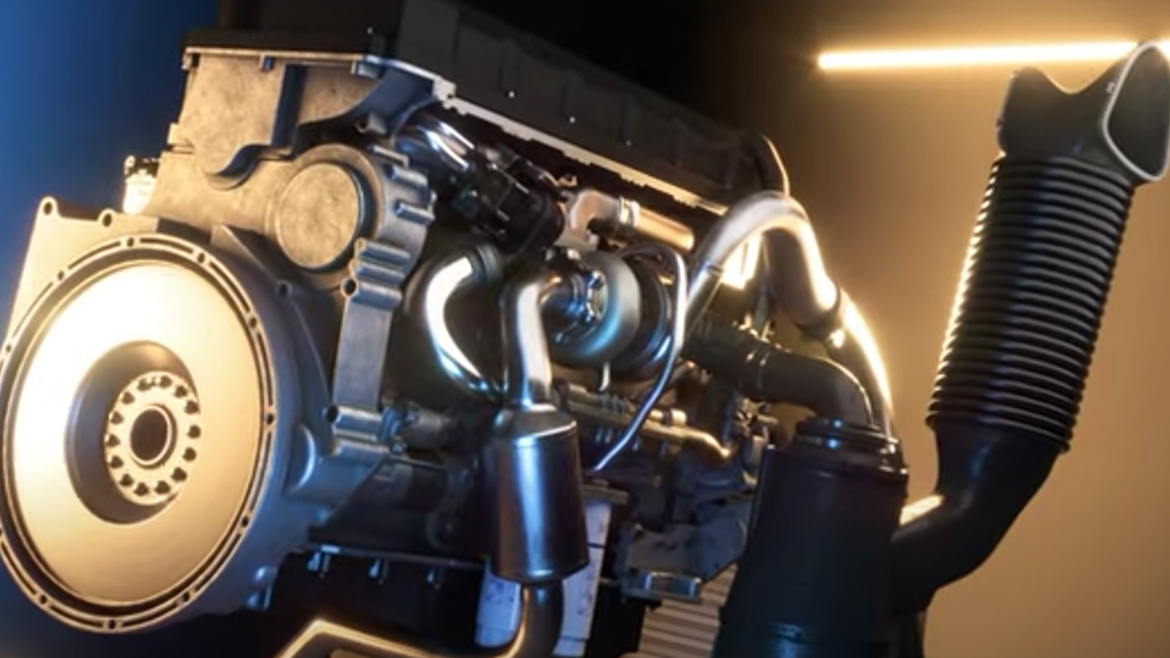The heavy duty diesel engine oil industry's first category upgrade in a decade ushers in higher performance and opportunity for all.
The need for higher performing heavy duty diesel lubricants is clear. Lubricants that enable modern engine hardware, contribute to fuel economy gains, and maintain the highest possible protective benefits, are now a must to maintain a reliable and productive fleet.
The next heavy duty diesel engine oil category collectively, API CK-4 and its low-viscosity HTHS counterpart API FA-4 (previously known as PC-11A and PC-11B respectively) is nearing first license (December 2016), and the category pushes performance to unprecedented heights. Compared to API CJ-4, CK-4 offers better performance and protection for all existing trucks, and ensures that hardware performs to full potential.
What's in a Name?
Throughout development, the new category was referred to as "PC-11", short for "Proposed Category 11". The official nomenclature has been determined: CK-4 for the backwards compatible licensing and FA-4 for low HTHS viscosity lubricant compatible with new hardware.
On the Horizon
"We now have a new heavy duty diesel engine oil category," says Paul Basar, regional business manager, heavy duty diesel engine oils, Lubrizol. "It's time to shift the conversation away from PC-11 being a "proposed category" to prepare for first licensing of a new generation of lubricants known as API CK-4 and FA-4."
How Does CK-4 Compare to CJ-4?
Through a series of updated and new tests, API CK-4 lubricants simply offer more benefits for all engines. CK-4 utilizes each of the existing API CJ-4 tests, plus two new tests as noted:
- Improved oxidative stability, via the new Mack T13 test
- Increased aeration resistance, via the new CAT Aeration test
- Improved shear stability
The Complexity Challenge
The new category upgrade is more complex than past category upgrades, and clear communication will be important, particularly for end users.
New Viscosity Grades: A majority of end users today recognize and regularly select 15W-40 lubricants. But CK-4 and FA-4 offer the option to choose lower viscosity grades for fuel economy benefits; CK-4 lubricants will be referenced by traditional kinematic viscosity grades 15W-40, 10W-30, 5W-40, and 5W-30, while FA-4 will be referenced by HTHS viscosity with 10W-30 and 5W-30 viscosity grades.
Additional OEM Specs: Individual OEM specifications will soon be finalized, and many will go beyond the baseline performance set by API. Several are expected to include a heavy duty scuffing test developed by Detroit Diesel and Lubrizol that is not included within CK-4. Scuffing resistance is important for several OEMs, unwilling to sacrifice that performance characteristic for in their vehicles.
Concerns over Combined Claims: While universal oils, those with combined API C (commercial vehicle) and API S (gasoline passenger car) claims, have long been used by fleet managers seeking a simplified service fill process, new challenges over phosphorus levels in these lubricants for diesel engines have arisen during development.
End user education is important. It's expected that a move away from CJ-4 oils will occur in a relatively short space of time - and for the benefits of CK-4 to proliferate, fleet owners and managers must understand what they're putting in their trucks, and why.
All stakeholders (OEMs, oil marketers, and additive companies alike) have an obligation to improve this understanding as CK-4 approaches. Development requires significant financial and resource investment. Consider that for oil marketers, developing a single new lubricant meeting the new performance requirements of the category can cost millions of dollars. Clearly demonstrating why CK-4 lubricants are simply better than CJ-4 lubricants for all trucks is critical.
A Win for the Marketplace
So how does CK-4 elevate the market?
- For OEMs: API CK-4 lubricants offer backwards compatibility to existing hardware thus all of the durability and efficiency that OEMs expect, while providing higher levels of lubricant performance than its predecessor CJ-4.
- For Oil Marketers: A unique opportunity to upgrade product portfolios with API CK-4 and to differentiate product lines.
- For End Users: API CK-4 lubricants are simply better, helping protect trucks, keeping them on the road for longer. End users will also have the opportunity to boost fuel economy by moving to lower viscosities within API CK-4 (from 15W-40 to a 10W or 5W).
- For Regulators: With higher performing lubricants available to all users, EPA set- emissions and fuel economy goals can be reached with the application of fuel efficient API CK-4.
Goals align for all stakeholders. Better fuel economy and reduced emissions, without sacrificing durability or protection, is a net good for everyone.
What does the Future Hold?
API CK-4 lubricants will quickly become the standard throughout the heavy duty market - the transition is doubly beneficial to minimize market disruption while maximizing the benefits of higher performing lubricants.
"We cannot lose sight of protection and durability in the pursuit of higher fuel economy," Basar concludes.
Lubrizol welcomes this new generation of lubricants, and can meet customer needs with expertise and advanced additive chemistry. Through its depth of technical expertise, Lubrizol has anticipated market needs and offers a targeted range of additives for both universal and dedicated diesel lubricants, certifiable under API CK-4 and FA-4.
Lubrizol can help prepare oil marketers for a bright future. Contact your account manager today.









